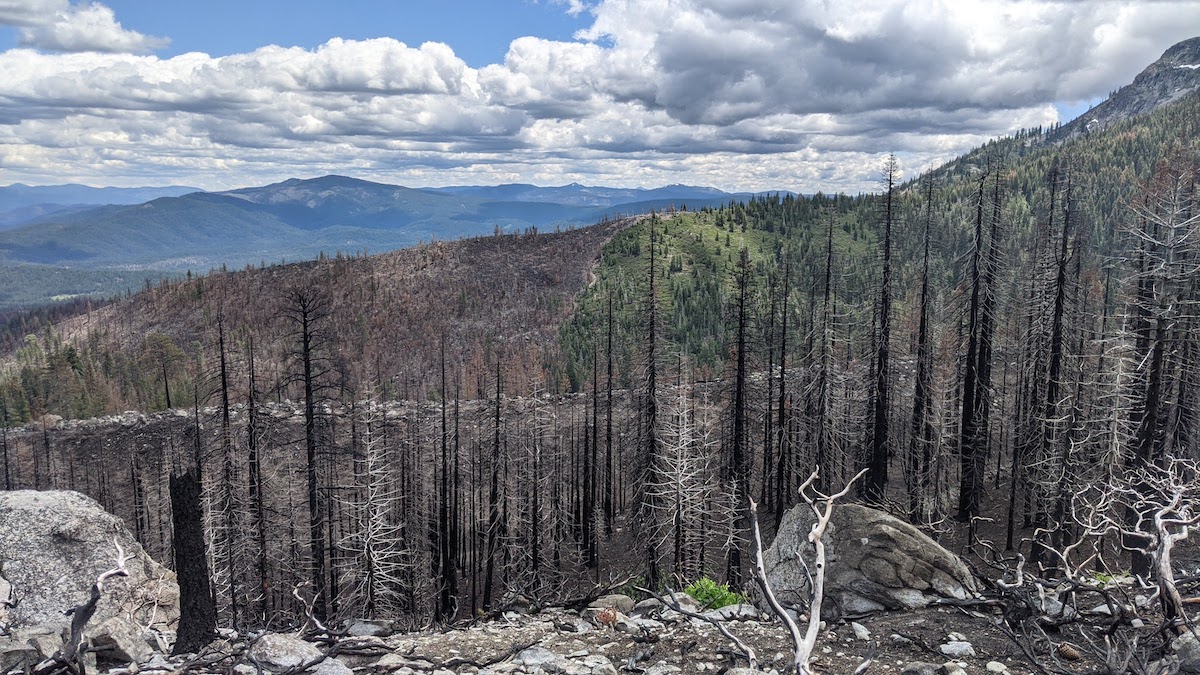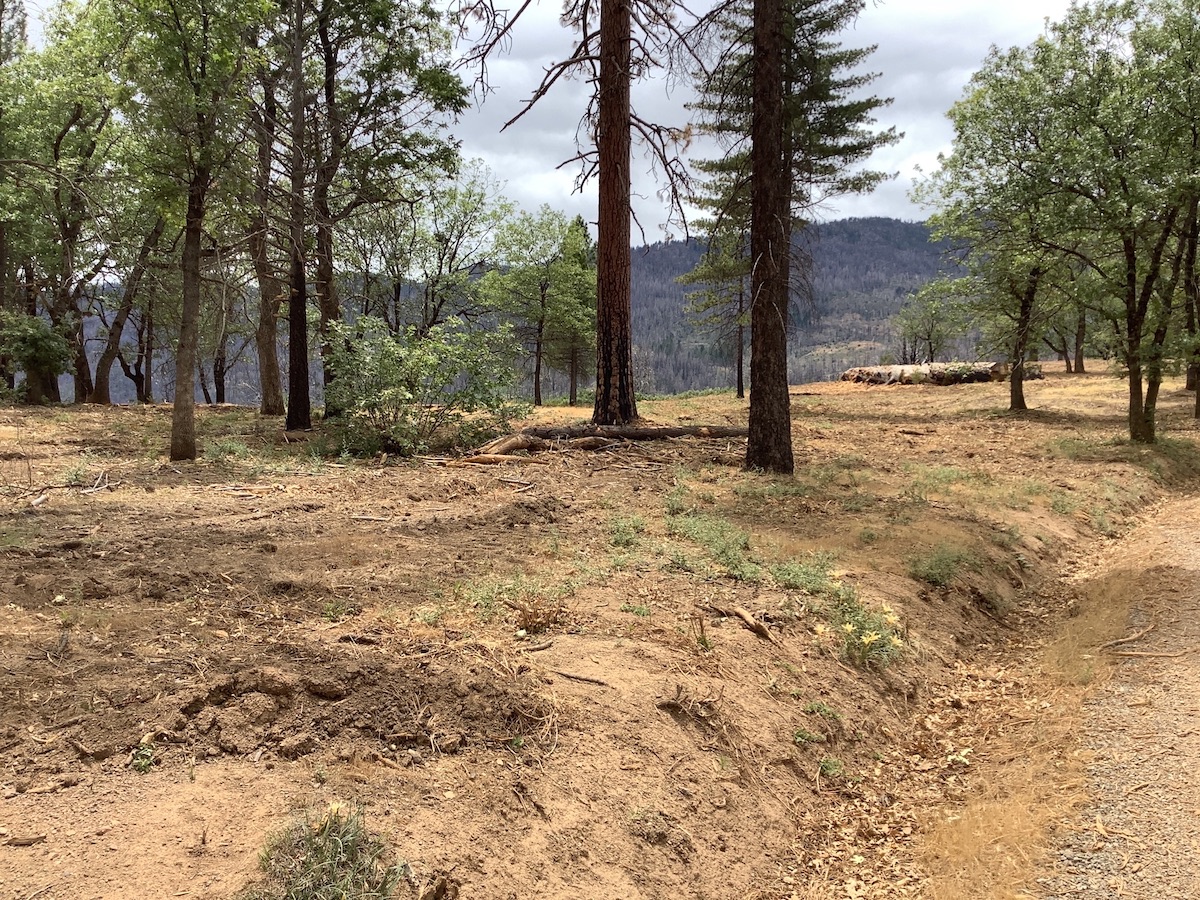Private Landowner Assistance Work Group | September 2022 Action Item Updates

Private Landowner Assistance Work Group | September 2022 Action Item Updates
Progress is being made on key Action Items from the Private Landowner Assistance Work Group’s Implementation Strategy. Read the update (link below) for a report on a few emerging EFRTS, NRCS‐CA new forestry technical and financial assistance agreements with partners, and UC Extension Stewardship Workshops.
RESOURCES
Expert Roundtable on Wildfire and Forest Resilience

Expert Roundtable on Wildfire and Forest Resilience
Exacerbated by climate change, the increasing frequency and scale of wildfires have devastated communities and ecosystems around the world, while releasing vast quantities of carbon into the atmosphere.
In the face of these accelerating challenges, calls for climate-smart management of natural lands have grown louder among policymakers, experts, and stakeholders. Government and civil society programs have begun investing in forest resilience and nature-based solutions to deliver on mitigation and adaptation goals, working with Indigenous partners whose knowledge and experience are vital.
Recognizing the need to bring together interdisciplinary, international coalitions to advance wildfire prevention, mitigation, and response, Prime Minister Trudeau and Governor Newsom committed their respective governments to hosting a roundtable on wildfire and forest resilience within their broader Climate Action and Nature Protection Partnership which they announced in June. By bringing together officials, academics, industry and civil society at UN Climate Week, this event delivers on that vision. By convening thought leaders to discuss our collective challenges, Canada and California hope to discuss collective challenges and chart next steps.
RESOURCES
US Forest Service Response
Governor Newsom’s Recap of Climate Week 2022
USFS Will Resume its Prescribed Fire Program

USDA Forest Service Chief Randy Moore Announces Actions the USFS Will Take to Resume its Prescribed Fire Program
Update on USFS’ Prescribed Fire Pause. In a statement announced on September 8, USFS Chief Randy Moore has decided – based on a thorough review, findings, and recommendations provided by its National Review Team – to conditionally resume the USFS’s prescribed fire program nationwide. The conditions include a requirement that all USFS units immediately follow all seven tactical recommendations identified in the National Prescribed Fire Program Review. These actions will ensure prescribed fire plans are up to date with the most recent science, that key factors and conditions are closely evaluated the day of a prescribed burn, and that decisionmakers are engaged in those burns in real time to determine whether a prescribed burn should be implemented.
RESOURCES
Wildland Fire Lessons Learned Center
U.S. Forest Service Announcement
Post Fire Restoration Symposium

Post Fire Restoration Symposium
This virtual symposium focused on how monitoring and research in the southern Sierra Nevada can support post fire restoration planning and help to inform adaptive management. Topics included treatment effects on wildlife, variable density treatments in plantations, hardwood management, aquatics and meadow restoration. Panel discussions provided the opportunity for collaboration on the implications of the work and how to apply this knowledge to future post fire management. The virtual symposium was held and recorded on July 14, 2022.
Presented by: USDA Forest Service Ecology Program, ACCG, SOFAR, and hosted by the California Fire Science Consortium
Biden Signs Inflation Reduction Act Affecting Health, Climate and the Economy

Biden Signs Inflation Reduction Act Affecting Health, Climate and the Economy
Biden Signs Inflation Reduction Act Affecting Health, Climate and the Economy. On August 16, President Biden signed a landmark climate change and health care bill into law. The Act includes the most substantial federal investment in history to fight climate change — some $375 billion over the decade, and significant investments in wildfire and forest resilience including:
Wildfire Resilience and Ecosystem Restoration
- $1.8 billion for hazardous fuels reduction projects on National Forest System land within the wildland-urban interface.
- $200 million for vegetation management projects on National Forest System land.
- $250 million for conservation, ecosystem, and habitat restoration projects on National Park Service and Bureau of Land Management lands.
Climate-Smart Forestry for Non-Federal Forest Landowners
- $450 million for grants to support climate mitigation, forest resilience, and carbon sequestration and storage practices.
Urban and Community Forests
- $1.5 billion for competitive grants to cities, tribal nations, nonprofits, and other eligible entities.
Forest Conservation
- $700 million for competitive grants through the Forest Legacy Program.
Forest Products and Innovation
- $100 million for grants under the Wood Innovation Grant Program.
RESOURCES
Sequoia National Forest Restoring Rough Fire Area With Partners

Sequoia National Forest Restoring Rough Fire Area With Partners
Contractors have begun implementing about 1,340 acres of an approximately 4,900-acre restoration project in the footprint of the 2015 Rough Fire affecting the Kings River drainage in Hume Lake Ranger District. The project is a partnership with the Great Basin Institute and American Forests, with funding from CAL FIRE’s Forest Health Program.
RESOURCES
Drill down into more details from the USFS on the Rough Plantation Restoration and Maintenance Project
U.S. Forest Service makes progress on 795 acres of fuels reduction on the Mendocino National Forest

U.S. Forest Service makes progress on 795 acres of fuels reduction on the Mendocino National Forest
U.S. Forest Service (USFS) land managers are making progress on 445 acres of fuels reduction on the Grindstone Ranger District and about 350 acres on the Upper Lake Ranger District.
Fuels reduction projects like these are examples of the kind of work and partnerships that the Mendocino National Forest will be building on to meet the USFS ambitious plan to treat millions of acres over the next 10 years.
The goal of fuels treatments is to reduce fuel loadings. When fuel loads are low, wildfire burns at a lower intensity. In the event of a wildfire, areas treated for fuels give firefighters a safer place to build lines to contain a wildfire.
RESOURCES
Administration Announces Plans for Reforestation, Climate Adaptation

Biden-Harris Administration Announces Plans for Reforestation, Climate Adaptation, including New Resources from Bipartisan Infrastructure Law
On July 2022, the U.S. Department of Agriculture and U.S. Forest Service announced a nationwide strategy that will address a reforestation backlog of four million acres on national forests and plant more than one billion trees over the next decade. According to USFS Chief Randy Moore, the reforestation strategy will serve as a framework to understand reforestation needs, develop shared priorities with partners, expand reforestation and nursery capacity, and ensure the trees planted grow to support healthy, resilient forests. In addition to the reforestation strategy, Secretary Vilsack announced 13 new USDA agency climate adaptation plans, which outline how each USDA agency will incorporate climate change into their operations and decisions to support communities, agriculture and forests nationwide.
RESOURCES
Administration Announces $1 Billion in Community Wildfire Defense Grants

Biden-Harris Administration Announces $1 Billion in Community Wildfire Defense Grants from Bipartisan Infrastructure Law
On July 26, Agriculture Secretary Tom Vilsack launched a new $1 billion Community Wildfire Defense Grant Program. Under this new, five-year, competitive program funded by the Bipartisan Infrastructure Law individual grants of up to $250,000 will be awarded to create and update community wildfire protection plans or conduct outreach and education, and grants of up to $10 million will be awarded for associated infrastructure and resilience projects. Applications will be available soon. Local and Tribal governments are encouraged to conduct planning exercises to assist their communities with wildfire preparedness, response and adaptation efforts.
Forest Service Invests $55M in 41 Projects To Improve Outdoor Recreation and Conservation

Forest Service Invests $55M in 41 Projects To Improve Outdoor Recreation and Conservation
The USDA Forest Service will invest nearly $55 million in funding from the Great American Outdoors Act (GAOA) to support 41 deferred maintenance projects across California and Hawaii in Fiscal Year 2022.
RESOURCES
USDA Announces $503 Million to Improve Outdoor Recreation and Conservation on National Forests
